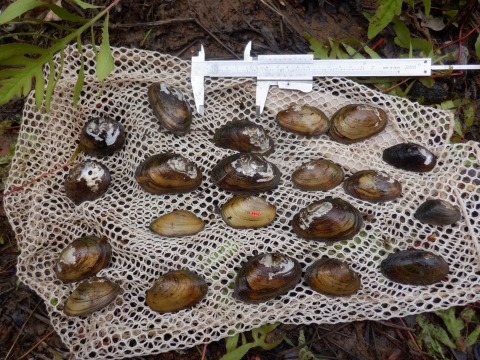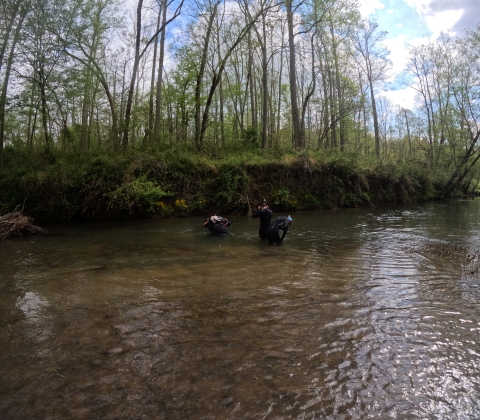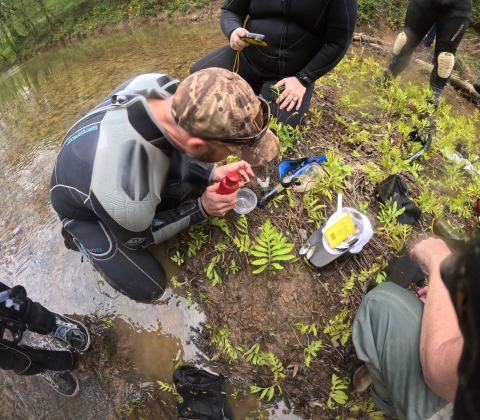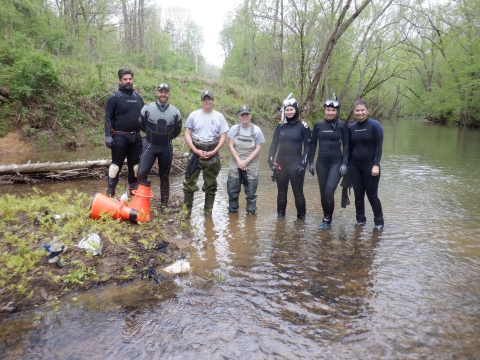Freshwater mussels are an important part of the aquatic ecosystem. Mussels are often referred to as "livers of the rivers" due to their amazing ability to filter and clean water. However, they are also one of the most imperiled taxa in North America, with approximately 65% of freshwater mussels species considered threatened, endangered, or vulnerable.
Collaboration is a key component to the preservation of threatened and endangered species, such as the Alabama Lampmussel, Lampsilis virescense. The Alabama Lampmussel is a federally endangered freshwater mussel native to Tennessee and Alabama. This species is only found in the Paint Rock River, Estill Fork, Hurricane Creek, and the Emory River and was identified as a target for captive propagation at Erwin National Fish Hatchery.
One of the first steps in propagating freshwater mussels is to collect broodstock broodstock
The reproductively mature adults in a population that breed (or spawn) and produce more individuals (offspring or progeny).
Learn more about broodstock , which are the female mussels that will provide the glochidia (larval mussel) for the infestation. It can difficult to locate suitable broodstock for freshwater mussels so one way to improve your chances is to increase the number of people that you have surveying for the species. Staff from Erwin National Fish Hatchery, the Tennessee Ecological Services Field Office, the Asheville Ecological Services Field Office, and the National Park Service all met at the Emory River near Wartburg, Tennessee to search for the Alabama Lampmussel.
Freshwater mussels can be hard to spot while in the stream bed. Oftentimes the mussel will be buried, with only the tip of the siphon visible. It takes practice to find these creatures. Luckily, with so many pairs of eyes and seasoned mussel collectors among the group, it didn’t take long to start finding the Alabama Lampmussel.
Around two hours were spent searching and 19 Alabama Lampmussels were found. Other species found during the survey include the endangered Tennessee Bean, Slippershell, and Rainbow Mussel. Eleven of the Alabama Lampmussels found were female, and one of the females was partially gravid.
Gravid mussels are females that are carrying glochidia. Glochidia are the larval stage of freshwater mussels. Tyler Hern, Project Leader at Erwin National Fish Hatchery, carefully extracted glochidia from the female Alabama Lampmussel. The glochidia was removed from the mussel with a water-filled syringe attached to a squirt bottle, and the glochidia were placed on ice for transport to Erwin National Fish Hatchery to be used for a future infestation.







